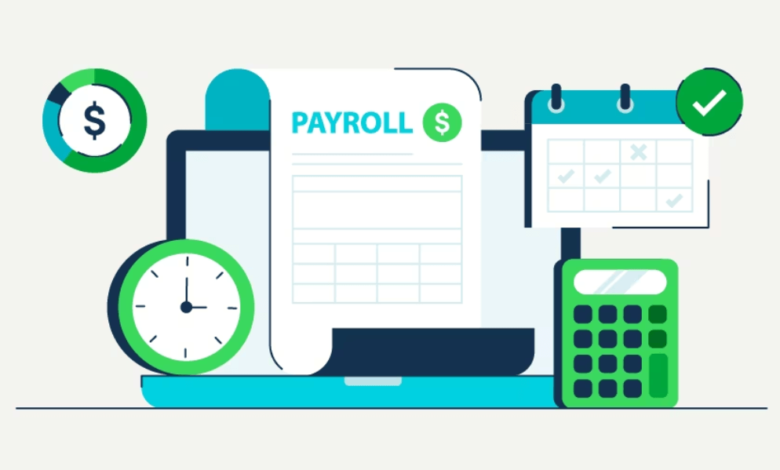What is the Role of an API on Payroll?

Payroll APIs bridge the gap between time management software and payroll systems. This is done by enabling them to access data on request. Historically, this was achieved through screen scraping, but now, a more reliable method is to use a direct API connection.
Payroll APIs can streamline time-consuming consumer processes, from deposit switching to income and employment verification. This is important for consumer fintech companies, who often need to process this data to provide lines of credit and loans.
Employee data
A payroll API can help reduce the workload associated with data migration between different systems. It can also help with time-consuming processes like new hire onboarding, during which the seamless flow of information is critical. Additionally, an API can help amplify the potential of data by enabling new tools and services that may not have been possible before.
However, the success of a payroll API depends on its ability to connect to a large and diverse range of data sources. The winning product will have two things: momentum and vision. Speed results from a narrow, focused product offering that solves an acute problem, enabling startups to gain traction and grow. Fiction, on the other hand, reflects the scaled and long-term outlook of the company.
Payroll APIs are a powerful tool for simplifying the financial lives of consumers. For example, they can make it easier for people to switch direct deposits or show proof of income when applying for loans. They also lay the foundation for a fairer financial system by enabling innovation and improving old underwriting models. For example, some allow lenders to use consumer-permission payroll and income data for credit decisions while remaining compliant with the Fair Credit Reporting Act. It also enables recurring access to paycheck data, which minimizes fraud in renting by making it easy for tenants to provide landlords with a current picture of their finances.
Company data
Payroll APIs help developers easily access and integrate payroll data. These unified APIs can provide salary information, records about benefits and deductions, and tax-related information. They can also manage and normalize data for maximum business effectiveness. They can be private or public and may require authentication to use them. They are an excellent choice for companies with high data coverage and who want to minimize the cost of integrations.
The best payroll APIs offer a variety of features that improve productivity and user experience. These include direct deposit allocation monitoring, which helps users avoid the time-consuming task of manually rekeying their information. Additionally, they enable employees to perform more functions in a single app, which can reduce the amount of time they switch between apps. Employees, on average, switch between apps more than 1,000 times per day, a significant productivity boost.
Review the vendor’s documentation when choosing a payroll API to ensure it meets your needs. Quality APIs often provide examples of how to use their services and have a developer community to answer questions. A good provider will also offer a free account to test the service before purchasing.
A unified payroll API is crucial because it enables developers to create products that connect to multiple data sources. For example, a fintech lender can build a product that uses payroll-as-a-service to verify a consumer’s income history and derisk their loans.
Payroll data
Payroll APIs can enable new consumer use cases and help businesses improve their services. In addition to the ability to integrate payroll data into financial products, these APIs can make it easy for companies to provide value-added services to their employees. For example, a payroll API can connect a company’s existing employee-facing systems with new fintech innovations such as on-demand wages and paycheck-linked lending.
Using payroll data in product integration is critical for many emerging fintechs. The success of these new solutions hinges on their ease of implementation and the breadth of their coverage. To achieve these goals, a unified payroll API must normalize and funnel data from various payroll providers into a consistent, predictable, and accessible format or syntax. This process is typically accomplished through screen-scraping or direct integration with enterprise applications.
The benefits of unified payroll APIs include a fast and seamless payment processing experience. They also allow enterprises to streamline their business processes by eliminating manual documentation. Additionally, these APIs can help accounting and tax management firms reduce their work to ensure compliance with local and national norms.
Insurance data
Insurance APIs can help companies reduce administrative costs and provide better customer service. They are process-agnostic, enabling them to work with any product or system. They can also connect with third-party applications and other insurers’ products to simplify integration. They can also help insurers improve their digital experience and stay competitive. The top insurance API providers offer various capabilities to enhance insurers’ digital experience. These include process efficiency gains and data analytics to drive performance and growth.
Insurance APIs are rapidly growing in fintech, and the benefits are clear to consumers. These platforms allow businesses to access consumer financial and employment data quickly. These platforms enable new consumer services and products, from deposit switching to loan repayments. In addition, they are helping to lay the foundation for a fairer financial system by improving old underwriting models.
The most critical stakeholders in a successful API program are business product owners, platform owners, data governance stewards, security architects, and ecosystem evangelists. These individuals are essential in ensuring that the API strategy is held accountable and the program’s goals are met. They will also be key in defining the API roadmap and creating appropriate policies to protect consumer data privacy.




